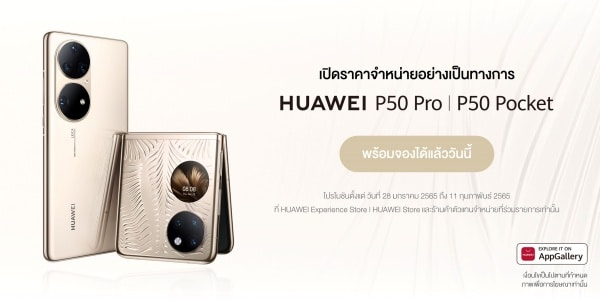By Kimeko McCoy • October 17, 2023 • 5 min read •

Ivy Liu
This Marketing Briefing covers the latest in marketing for Digiday+ members and is distributed over email every Tuesday at 10 a.m. ET. More from the series →
To better compete with the likes of global coffee giants, Starbucks and Dunkin, Peet’s Coffee, in it’s biggest brand marketing campaign ever, has launched a super charged media mix to boost brand awareness.
Notably, Peet’s new messaging comes at a time when economic headwinds and inflation loom above both shopper’s wallets and the industry at large, bringing marketing budgets under regular scrutiny. The California-based specialty coffee roaster has 329 U.S. locations in comparison to Dunkin’, which has more than 9,500 U.S. locations and Starbucks, which has more than 16,250 locations.
Peet’s spent six months finalizing its brand strategy, looking for gap opportunities in the competition’s own strategies to launch its first fully-integrated campaign to boost brand awareness. It’s unclear how much Peet’s is spending on this effort as Jessica Buttimer, vp of brand at Peet’s Coffee, did not offer specific figures.
The coffee company has spent nearly $3 million on advertising from January to September of this year, shaping up to the $4.3 million it spent last year last year, according to Vivvix, including paid social data from Pathmatics.
Digiday caught up with Buttimer to talk strategy, marketing as an underdog and competing in a crowded marketplace.
This conversation has been lightly edited for clarity.
Peet’s is a nearly 60-year-old coffee brand. Why pursue brand awareness now?
We’ve gotten great awareness across the country. Most of our cafes are here on the west coast. Despite having high awareness though, our familiarity is pretty low. We define familiarity as people knowing who we are and what we do differently from other brands. We are a small and relatively quiet brand in a very large and relatively loud category. So our biggest struggle was to build familiarity and to break through with our story, because we think we’ve got a great story to tell.
What does the strategy and media mix look like to reach brand marketing goals?
We looked at when coffee, in terms of the consumer, dayparts [or the time of day a brand considers most effective to target an audience]. When is it most relevant? The morning daypart is really important. So we said ‘Okay, how do we do things differently than the rest of the category?’ We looked at how they were advertising and we looked for vehicles that were under-leveraged. That ended up being out-of-home and audio. We’re doing podcasts, specifically on Spotify. And we’re doing out-of-home near our cafes. We didn’t want to take too much time to build reach. So we decided to use online video and connected TV. You’ll see us on Hulu, YouTube, TikTok and Instagram, socially, and Pinterest, socially. And then Spotify and Amazon would round it out. It’s completely an integrated 360 campaign. It’s not different from what you’d expect from a big brand, but it’s heavier on these dayparts and these vehicles that the other coffee companies are not using as readily.
Inflation is top of mind for many right now. Why invest more in marketing and advertising now?
It’s fair to say it’s significantly more [ad dollars] than we’ve invested in the past. It would be hard to put it into percentages. It’s much bigger than anything we’ve ever done before as a brand. The hope next year would be to go from those four markets into potentially national. We’ve always done a good job with distribution, but we also needed to have a share of voice that enabled the consumer to really understand what we were all about. I don’t think a brand can just rest on its product quality. The cult-like following definitely comes from the product. But we needed to round that out with more of the value system of the brand and that personality to get people to be willing to pay the price that we charge. We know what consumers are dealing with and we invested responsibly, but not at the expense of everyday value.
How does this compare to what Peet’s has done in the past?
It is our first fully integrated campaign and it is the first time that we’ve ever stepped back and told a long-standing brand story. In the past, we’ve told more product stories. We usually invest seasonally at our retail stores behind product news — like limited time offerings. We have done, I would say, more word-of-mouth, local community-based marketing vs. national. Now, this is across four markets, so it’s not fair to call it fully national. But we have never gone cross-channel. We really have invested very little in social beyond the organic. So this includes paid social at a much more significant level than we had ever done. And then, connected TV, it’s the first time we’ve ever used that. So much bigger reach and bigger brand story rather than a point in time, product-driven story.
By the numbers
While ChatGPT was introduced to the public just one year ago, Americans seem to be quite satisfied with AI’s impact on their shopping experience. UserTesting, a research and insights platform, commissioned a recent survey of 2,000 US adults. Below are some key findings. — Julian Cannon
- 73% believe AI improves the shopping experience
- 65% believe AI knows their shopping habits equal to or better than themselves
- 87% are admittedly likely to provide personal information to brands in order to save money
Quote of the week
“That means they [TikTok execs] are trying to target brands that are likely doing at least $30 to $50 million in revenue with this offer. It looks like they [TikTok] are trying to attract more of the mid-market and upper-market brands with their ad product incentives while TikTok Shop seems to be more focused on SMBs.”
— Shray Joshi, founder and CEO of Good Peeps digital agency, on TikTok touting its curated audiences to advertisers to drive Black Friday and Cyber Monday sales
What we’ve covered
- How real estate brands are retooling their marketing spend to weather the housing market squeeze
- Take a look inside the NFL’s pitch to include NIL talent in its college marketing program here
- Why Lenovo decided now’s the time to in-house a key bit of ad tech
https://digiday.com/?p=522031
More in Marketing

Inside Uber’s strategy with content creators to amplify its organic TikTok following
October 30, 2023 • 3 min read
As a result of the strategy, Uber’s TikTok followers surpassed 750,000 followers as the brand had over 150,000 followers one month after launching on TikTok, according to the social intelligence platform Brandwatch. Furthermore, the data showed that its organic video content has garnered 35 million views, and its videos have 3.7 million organic video likes.

Behind the numbers: unmasking the complex reality of platform advertising
October 30, 2023 • 5 min read
The narratives around these platforms are a lot more complicated nowadays, highlighting how they are increasingly susceptible to the fluctuations of the broader market.

How Campbell’s Chunky soup brand sees the possibilities in sports marketing beyond live sports
October 27, 2023 • 4 min read
With more ad options, sports marketing takes on a broader definition.
Note: This article have been indexed to our site. We do not claim legitimacy, ownership or copyright of any of the content above. To see the article at original source Click Here













